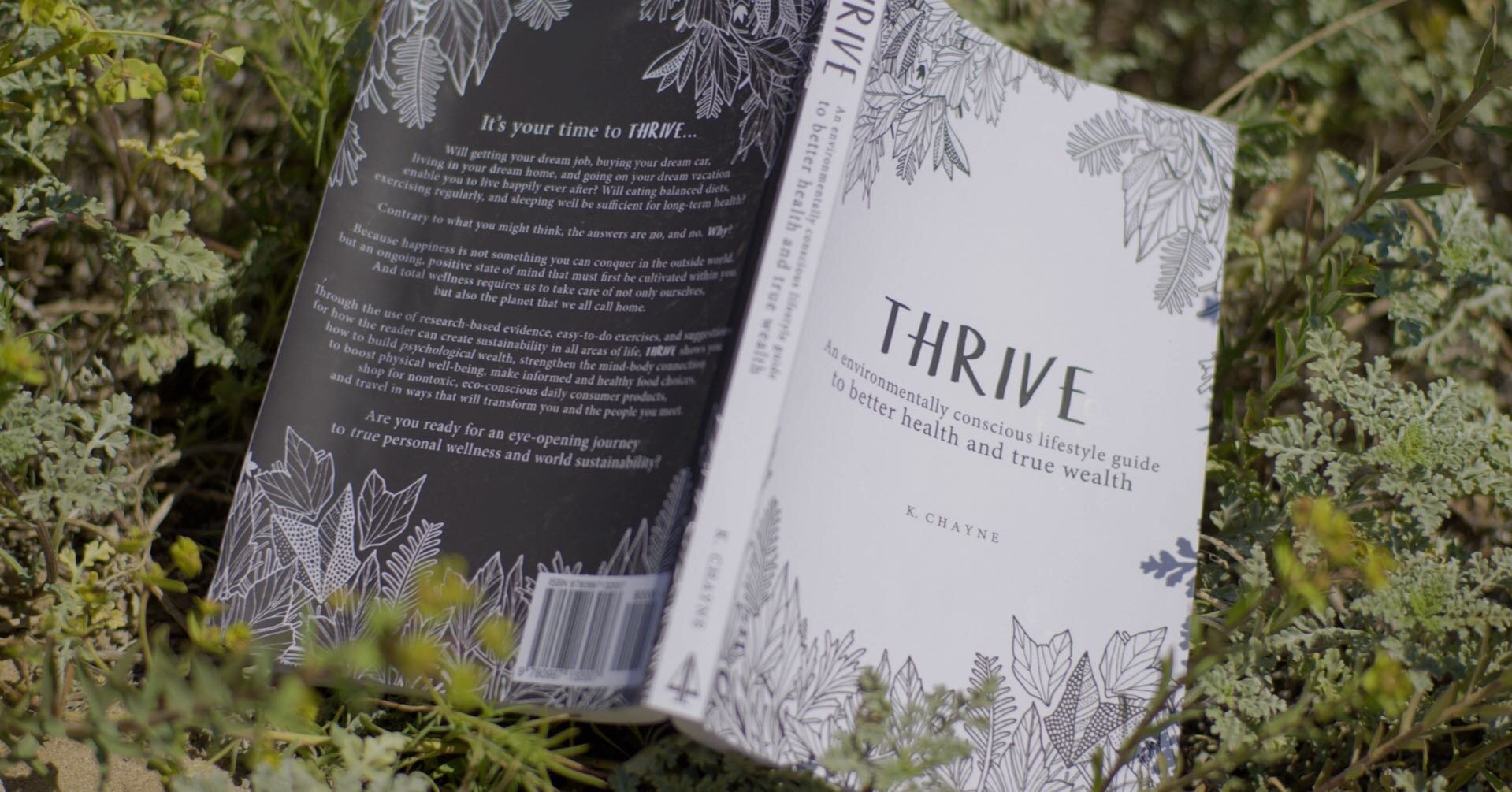
It’s Your Time To Thrive: Kamea Chayne, Author Of Thrive
Meet Kamea Chayne, Author of Thrive
In a world filled with products, one young woman chose to weave together the written word to make an environmental impact. We recently had the privilege of sitting down with Kamea Chayne, the young author behind Thrive – an environmentally conscious lifestyle guide to better health and true wealth. In our short conversation Kamea shared the inspiration behind her first book, the difficult choices she makes every day as a conscious consumer, and the ways in which she hopes to grow her own career.
Congratulations on your very first book! As a young author and eco-lifestyle advocate, what was the inspiration behind Thrive?
My multicultural experiences and multidisciplinary studies at university inspired me to write Thrive. My travel experiences sparked my interest in sustainability and led me to see how we all have common desires in life — for good health and happiness — no matter our backgrounds, personalities, or interests. My multidisciplinary studies encouraged me to examine our world using a broader lens. Psychology helped me to understand people’s perspectives, marketing helped me to understand business perspectives, and environmental studies helped me to understand nature’s perspectives. Combining these oftentimes contradicting viewpoints, I wanted to answer the universal question: How can we live more healthily for ourselves and for our planet?
Tell us the story about how this all began. When did you first start noticing the impact of your consumerism and how did you decide to consciously cultivate an environmentally responsible lifestyle?
When I first heard about all of the environmental issues that threaten our global welfare today, I naturally wanted to understand how we could help alleviate these problems. After learning about the food industry’s negative externalities and after learning about how businesses are driven by consumer demands, I put two and two together and realized how much power we have as consumers. The truth is, while companies may seem so powerful, and their business practices impossible to change, they all thrive off of satisfying the desires of their consumers. This is what led me to see how we can reshape our future together through reshaping our consumer choices.
From the food we eat to the clothes we wear and the cars we drive, there are so many choices that we are each faced with making every single day. Which decisions do you prioritize? Which have you found to have the greatest impact?
There’s nothing that I particularly prioritize over the others, because I believe every thoughtful decision made counts. Due to various reasons — accessibility, budget, and option limitations — I know it is extremely difficult to make perfectly sustainable choices 100% of the time. But whenever possible and practical, I focus on choosing quality over quantity, avoiding impulse purchases, and making informed, low-impact shopping choices.
Seems simple enough, even though we know how overwhelming each of those individual choices can be. How do you balance traveling the world with your desire to minimize your environmental footprint? What do you do to make your travel more sustainable while still indulging your wanderlust every now and again?
There’s no denying that transportation contributes to pollution and climate change. But due to budgeting and scheduling constraints, traveling the world for leisure is something that most people can afford to do only once in a while. So instead of feeling guilty about driving or flying across the globe to reach a certain destination when there are no feasible, alternate methods of transport, I focus on reshaping my little, everyday consumer choices that accumulate to have massive impacts over time.
In general, I don’t believe sustainable living has to be so black and white — do this, and never do this. It’s more so about being aware of the impacts each of our thought processes, habits, and consumer choices can have, and doing what we can, as much as is practical and possible, to lessen our overall impacts in all areas of life. In the grand scheme of things, to make traveling greener we can support governments and organizations pushing our automobile industries to cut down on their emissions and to manufacture more fuel efficient cars and airplanes. This is something I’d personally like to learn more about and contribute more to. When I do travel, though, I try to pack light, bring reusable containers and water bottles, plan efficient travel routes, and take direct, nonstop flights to my final destination. (Takeoff and landing contribute to most of the air pollution that an airplane emits.)
Tell us more about writing. How did this become a career path for you and how has it challenged or supported your effort to live more sustainably?
While I wouldn’t necessarily say that writing is my career, I think it is a powerful tool that has and continues to help me share my passions, questions, thoughts, and research. Knowledge is so empowering, and it is through other people’s writing and sharing of knowledge that I became inspired to do the same. I can only hope that my words will spark curiosity in others and inspire them to live more positively and sustainably. When I first began writing Thrive, it challenged my wanting to be more active, because it inevitably placed me at my desk, behind my laptop, for countless hours every day. This lifestyle wasn’t sustainable for my health, as inactivity is a key risk factor for many chronic illnesses. In the short term, it also made me feel antsy and achy, and I knew something needed to change so that I could think more clearly and write more efficiently. So, I began alternating between sitting down to write and standing by my bar counter to write. I also obtained a small stepping machine so that I could exercise while working on my laptop. Doing so made my otherwise inactive lifestyle more active, and it stimulated my blood flow so that I felt more energized and motivated to crank out my words.
I love the creativity you applied to such routine tasks! Let’s get back to consumerism. The marketplace is more crowded than ever before with responsible brands that have built social and environmental impact into their business models. What are some of your go to brands for sustainable products these days?
I don’t like to pick favorites, because there are so many companies and startups doing great things and changing the status quo. I will say, though, that I think Zady (www.zady.com) sets an incredible example of how a responsible, transparent retailer should operate. It narrates in detail the histories of every product they sell, beginning from their origins. This shows that it understands where its products come from, who made them, and what they were made with—the exact information we need in order to become informed consumers. The artful way that Zady passes this knowledge onto its consumers is just a huge bonus.
With your first book already finding its way on to nightstands across the country, where do you want to go from here? What are the next areas of impact that you envision for yourself?
My primary focus will be to use creativity to advocate for sustainability. As I have done with Thrive, I hope to continue encouraging a more holistic perspective of health — one that encompasses our mental, physical, and environmental health. I also hope to continue inspiring people to unite our common purposes and to broaden our definitions of “home” to see that we are all just one world.

